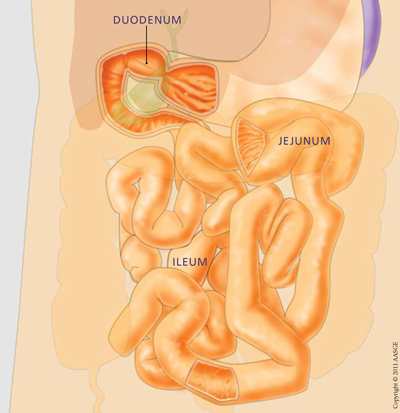Celiac Disease
Overview
Celiac disease is centered on a gluten intolerance that triggers a response in your small intestine. Celiac disease is a disorder that makes it difficult for an individual to digest food properly. A protein found in wheat, barley, rye, and other grains, gluten naturally causes the immune system of celiac suffers to react via their bowel. As the disease can destroy the lining of your intestines over time, this prevents your body from attaining the vitamins, mineral, and other minerals, and other nutrients it needs to thrive. Symptoms may include unexplained iron-deficiency anemia, fatigue, bone or joint pain, arthritis, bone loss or osteoporosis, depression or anxiety, tingling numbness in the hands and feet, seizures or migraines, missed menstrual periods, infertility or recurrent miscarriage, canker sores inside the mouth or an itchy skin rash called dermatitis herpetiformis.
Celiac disease is an autoimmune condition that causes your disease-fighting white blood cell to attack your own tissue. Celiac disease is a gluten intolerance that triggers a response, usually damages the lining of your small intestine. Celiac disease is a disorder that makes it difficult for an individual to digest food properly. People who have been diagnosed with Celiac cannot absorb the nutrients from the foods they eat. Without these nutrients, complications may develop, like malnutrition, osteoporosis, infertility, and even cancer.
The lining of your small intestine is made up of tiny, finger-like filters called villi. When someone with Celiac eats food with gluten, the gluten destroys these fingers, eventually leaving the lining smooth. The villi helps you digest foods, which without, causing major problems.
Celiac is very common that it affects one in a 100 people in the U.S.
symptoms of celiac disease
Many sufferers of Celiac disease don’t realize they have the disease. Celiac has a large range of potential symptoms, it is frequently mistaken for other conditions. Sometimes years can go by before the sufferer is finally diagnosed.
- Unexplained iron deficiency
- Brain fog
- ADHD – Attention deficit-hyperactivity disorder
- Anemia
- Fatigue
- Bone or joint pain
- Arthritis
- Bone loss or osteoporosis
- Depression
- Anxiety
- Infertility or recurrent miscarriage
- Canker sores inside the mouth
- Itchy skin rash (dermatitis herpetiformis)
diagnosis of celiac disease
Your physician will order blood tests to screen for the presence of antibodies associated with Celiac disease. Usually the patient continues to eat gluten products to screen for high levels of antibodies. If the tests come back positive, in most cases the next step is an endoscopy. The physician will examine the small intestine and may even biopsy a sample of the lining. The biopsy will show the depletion of the villi.
Be careful where you buy your foods. Look for products that are labeled Certified Gluten Free. Gluten-Cross Contamination is when a crop, such as soybean –which is gluten-free, are grown in rotation (in the same fields or next to) with wheat, barley or rye. Sometimes the farmers will use the same storage facilities and trucks to transport to the market.
A skin test can be used to diagnosis those with itchy skin rash symptoms.

treatment of celiac disease
There is only one treatment – A Gluten Free Diet.
Once you have eliminated gluten from your diet, your intestinal lining will begin to heal. The villi will grow back and help you digest your foods so that you may attain the vitamins, minerals and nutrients it needs to survive.
prognosis for celiac disease
Excellent once the diet is under control and is consistent.
